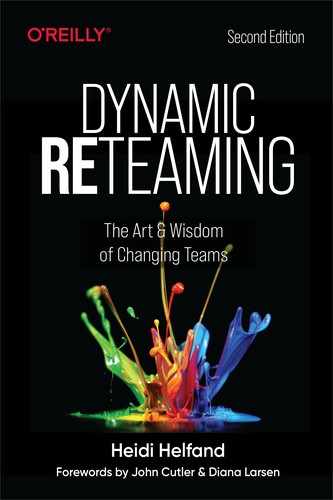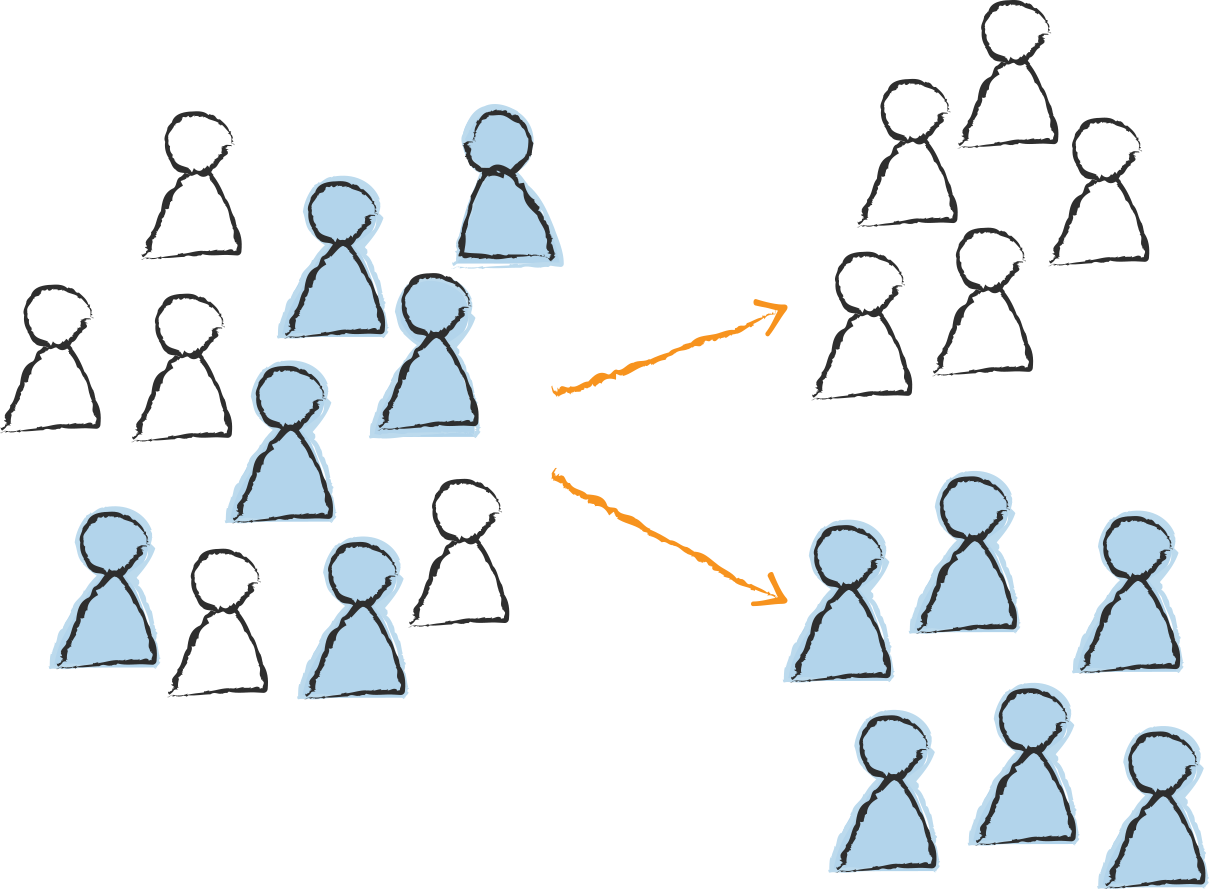What It Means When You’re Asked, “How Do We Maintain Our Culture?”
Thus far, we’ve explored reteaming patterns related to growth, including the one-by-one pattern and the grow-and-split pattern. After some time has passed and your company has grown in these ways, things start to feel different and the people around you might ask, “How do we maintain our culture?” I feel like it’s almost a trick question when this is asked, because it means that your culture has already shifted into something else.
When I joined one of the startups I was at, I found myself in the position of advising and coaching a handful of engineers who were early employees at the company. There were about eight hundred employees at the time and probably two hundred in engineering. These early hires were concerned that the company was changing—they could see it and feel it with all of the new hires around them. At that time, we were all in one large open office with the capacity to hold around three hundred people. You would walk in our development area and come across so many people you didn’t know. It became hard to remember and match names with faces. It’s like you’re living in an example of Dunbar’s number—where so many new people have been hired to such a degree that you don’t have the ability to have relationships with all of them—there are just so many more people.
This growth continued for years. Some might call it the hypergrowth phase—applying the term that, to my knowledge, originated in a Harvard Business Review article by Alexander V. Izosimov, CEO of the telecommunications company VimpelCom, in which he wrote about the growth of cell phone markets.16 I’m applying it here to label the time at the company when you’re hiring like crazy. You have a mandate to grow. You have all of these open positions. It’s a very distinct time in the growth of a company. There is a lot of reteaming that is happening—mostly the one-by-one pattern and the grow-and-split pattern, in my experience. Splits and reorgs happen at higher levels than the teams as well. All of this going on all around you feels very dynamic and changeable—hence, dynamic reteaming.
Yet while all this is happening some things feel like they are getting slower. Decision making might take longer due to having more people. You feel less nimble than you did during startup days. More process is developed. How you did it before is different now. Maybe there was more freedom and autonomy before, but now it’s changing. You need to use software that you didn’t use before. Things are “rolled out” across the company. There’s a greater need to track employee data since there are so many more employees. I’ve been at three startups that grew, and at all three I was there on the day employee badges were given out with everyone’s name and photo, and they started locking the doors because of security concerns. You just don’t know everyone anymore. It’s a visceral experience. It’s a milestone. It’s another signal that the company has grown.
Furthermore, during this type of culture change, power is shifted around. All three startups I’ve been at were founded by technical people. Engineering always felt like the center or hub of the company. We had the funding, and we seemed to have the power. With time, in my experience, this shifts out, and things are driven by outside forces like finance and HR. When these things happen it feels quite different, again, because it is. We have new rules to follow that are given to us from outside our department. People try to standardize human systems, like performance management practices and career ladders, across all different departments. The freedom to do things as you want in your own department is now part of a wider discussion. Resource allocation is discussed. Work gets capitalized or expensed. You have all-hands talks about the ratio of revenue to expenses. The hiring slows to help you get to a better ratio. Hypergrowth takes a new form—a new stage of being efficient and “doing more with what we have.”
All of this change is not for everyone. When startups grow and shift forward into larger companies, people start leaving. Some of the early employees might feel like the company has changed too much for them, so they need to go find another job or start something themselves. When this happens I think it’s a good sign. People self-select out. If they do not, and they don’t like the buildup of process around them, they might add drag to the system, doing things that are counterproductive to what the company must become. So we send them off in a positive light—we thank them in public for their contribution and wish them well.
In her book, Powerful, Patty McCord, who served as chief talent officer at Netflix, talks about hiring people for the future company you want to have. She says, “Identify the problem you want to solve, the time frame in which you want to solve it, the kinds of people who will be successful at that, and what they need to know how to do, then ask yourself, What do we need to do to be ready and able, and whom do we need to bring in?”17 I think that there’s a lot of truth to this perspective. Your current team might not have the skills, the interest, and the gumption to do the work of the future state of the company. Some of them might, though, and re-roleing into something else still might work. You need to take this human by human to see what they are doing now, what their future goals are, and what they want to grow into. You need to decide whether you want to support them on that journey and provide opportunities or whether someone else might be better suited for that role. You need to look out for the business entity while at the same time considering the humans that are already there. It’s not always easy.
People might experience a false sense of loyalty at companies and feel invincible. Just because you were there at the beginning doesn’t mean you have the skill set to help the company to thrive at scale. This is where tough decisions come in, to do what’s best for the company and where it is growing.
When you’re at a startup and you’re in love with it, it’s hard to see it grow and change. But it’s what it must do if the goal is to develop a large, global company that is out to change the world. You need to hire in people who are along for that ride. Nostalgia for the past startup days is a trap that I’ve fallen into, at least in my second startup. You need people who can propel the thing forward.
So, when people ask, “How do we maintain our culture?” you need to pay attention to them. Meet with them. Listen. Maybe they are ready to move on. Or maybe they are ready for a new role that they see as beneficial to helping the company morph—because it has changed, and it will continue to change. That’s the nature of the beast.
Dynamic reteaming is driven by growth, and it’s also driven by the desire to work on new things, in new teams. In the next chapter, we will take a look at the isolation pattern, which is typically driven by new areas of work.


